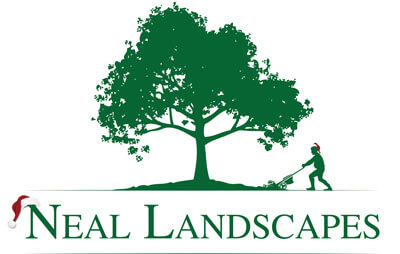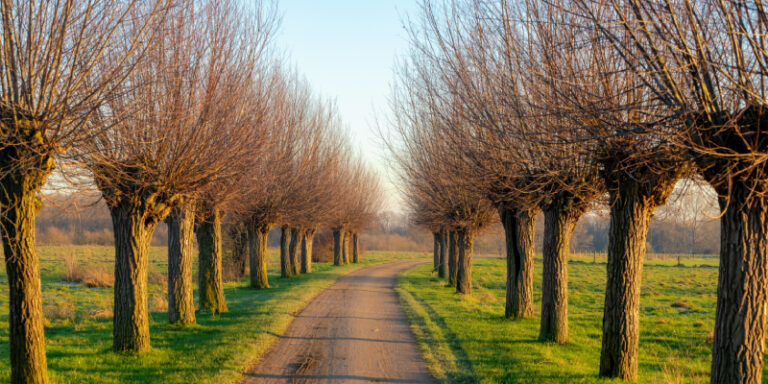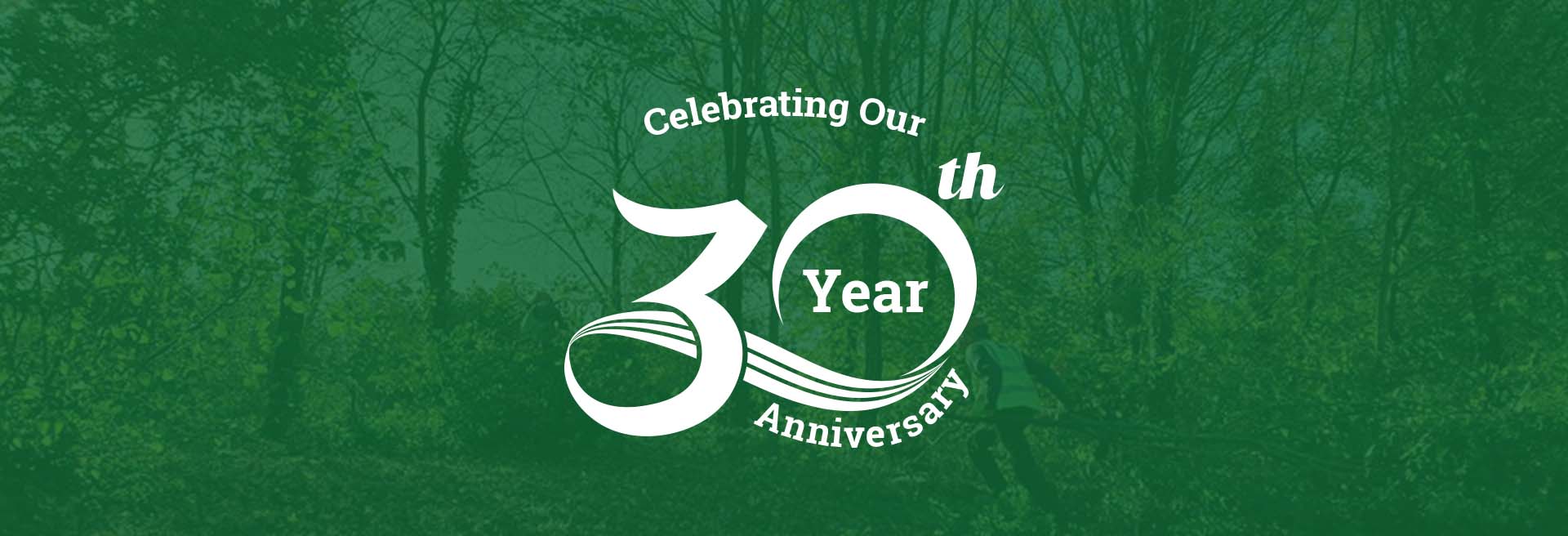Each year, as spring rolls in, gardeners the world over face the same problem: To prune or not to prune? While shrubbery in full bloom may look beautiful, it’s not always the best way forward. Excessive growth can give rise to a host of problems, including soil subsidence and even physical damage to your property. That’s why growth management strategies like tree pollarding are so important for maintaining a healthy landscape. But what is pollarding trees, and how can it benefit you?
What Is Pollarding Trees: Your Guide To Growth Management
With origins dating back to the 1st century BC, pollarding is one of mankind’s earliest pruning systems. It remained widespread until the eighteenth century when branches were an essential source of fodder for livestock, firewood and other purposes. However, in the mid-nineteenth century, pollarding was deemed profligate, and the practice was almost forgotten by the early twentieth century.
Only recently has public opinion on pollarding begun to shift, as leading arborists have found the practice isn’t wasteful and may actually be the key to preserving some of the UK’s most threatened tree species. Conservation projects, like Ancients Of The Future, actively advise and undertake pollarding at important sites throughout the country to allow trees and their surrounding ecosystems to thrive. In this article, we’ll show you how you can employ the same pruning systems to maintain the health of your property’s exterior.
- What Is Pollarding A Tree?
- What Should You Pollard On Your Property?
- When Should You Pollard A Tree?
- How Do You Maintain A Pollarded Tree?
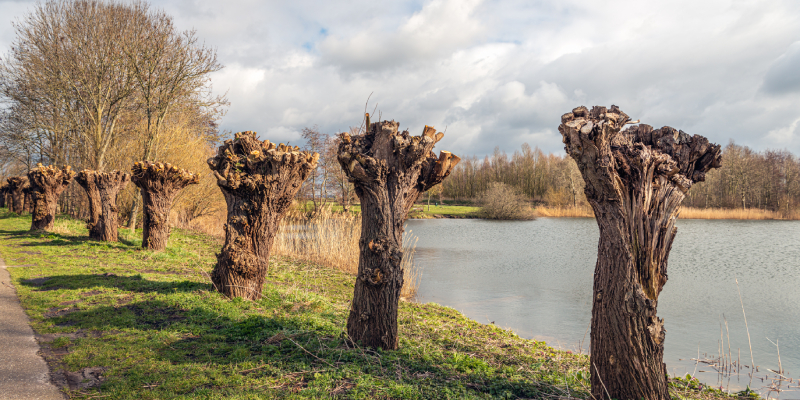
What Is Pollarding A Tree?
Pollarding is the cyclical removal of growth in young trees intended to encourage development that benefits both the tree and its surroundings. More commonly seen in mainland Europe, pollarded trees can be identified by the characteristic knobs at the end of their main branches. Local councils often recruit the services of a tree surgeon to pollard street trees and prevent them from obscuring the vision of motorists or pedestrians. Homeowners also take on their own pollarding projects to reduce shade in their gardens and limit trees to a suitable size.
During pollarding, a tree is cut back to a basic framework of branches deemed appropriate for growth. Hard pruning like this stimulates the development of many slender shoots from each stump. This process is repeated annually or every second year as each new stem should be reduced to within 1-2cm of last year’s growth. The benefits of your labour will become clear later in the year when your trees are in full bloom. The canopy will be neatly shaped with more colourful, youthful leaves and decorative bark.
While pollarding may seem straightforward, there’s little margin for error. Damage to the head of the stem can allow disease into the tree, causing leaf loss, crown dieback, and, in some cases, the tree’s death. Expert knowledge can help mitigate the risks associated with tree pollarding, so recruiting a professional tree surgeon for the job is never a bad idea. For assistance with your tree maintenance, get in touch with Neal Landscapes’ team of tree surgeons in Milton Keynes and surrounding areas. With decades of experience in pruning systems, you can be sure your shrubbery is in safe hands.
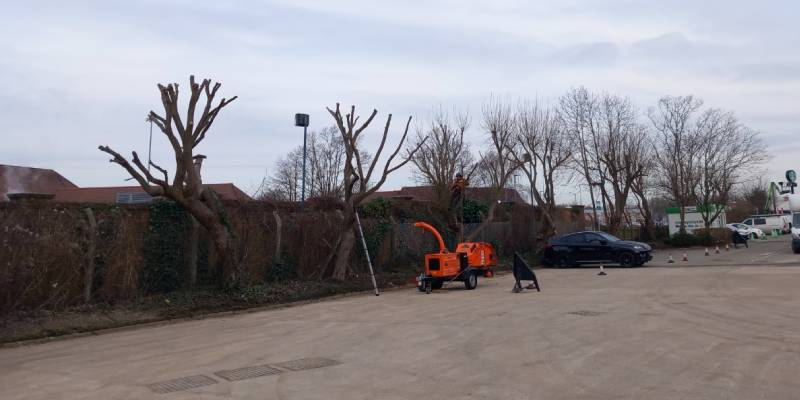
What Should You Pollard On Your Property?
Any tree capable of producing what is known botanically as ‘epicormic growth’ can be pollarded. This refers to a plant’s response following damage or stress. It’s the growth of new shoots from epicormic buds that lie dormant beneath the bark and can be instigated into mass production by pruning. Most deciduous broad-leaved trees are capable of epicormic growth, and this kind of woodland thrives in the UK, making this country a pollarding hotspot.
These trees are commonly used in the UK for pollarding because of their robust regrowth, versatility, and adaptability:
- Lime (Tilia spp.): Commonly used in British streets and parks due to their ability to regrow from pollarding.
- London Plane (Platanus × Hispanica): Widely used in urban areas, particularly London, as they tolerate high pollution levels and vigorous pruning.
- Willow (Salix spp.): Common in wetland areas. Various willow species can be pollarded.
- Ash (Fraxinus Excelsior): Often pollarded in more traditional landscapes. Caution is advised due to the spread of ash dieback disease.
- Oak (Quercus spp.): Historically pollarded for timber, most commonly found in traditional woodlands.
- Horse Chestnut (Aesculus Hippocastanum): Recognisable due to its size and large flowers, horse chestnuts are pollarded to manage their size in urban settings.
- Alder (Alnus spp.): Plentiful in wet areas, they regrow rapidly following pollarding.
- Sycamore (Acer Pseudoplatanus): Known for its hardiness and ability to regrow following pollarding.
- Hornbeam (Carpinus betulus): Commonly used for more formal hedges and avenues.
- Poplar (Populus spp.): Species like the black polar can be pollarded.
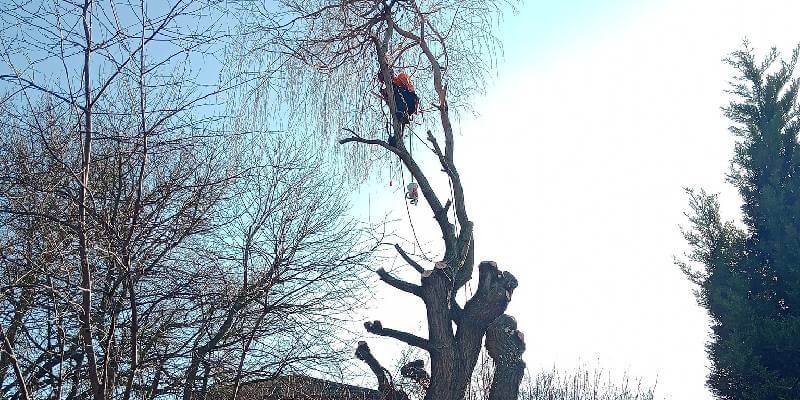
When Should You Pollard A Tree?
The time you choose to pollard is just as important as your technique. Sychronising your pruning with the tree’s natural growth cycle is essential. That’s why the best time for pollarding is in late winter or early spring – just before the trees and shrubs go through the year’s period of growth. Not only does this time best suit the tree’s health, but it also minimises the impact on other wildlife during nesting and breeding season.
While the ideal time for pruning is in the colder months, it is best to avoid pollarding during a harsh frost. A tree’s exposed cuts can freeze and cause tissue damage in excessively cold weather. This will slow the rejuvenation process and can often lead to stunted growth. Additionally, you should aim to pollard a tree before it produces new leaves and shoots in spring. This way, the tree can put its energy into growth rather than existing branches.
Lastly, you’ll need to consider the tree’s lifespan before pollarding. The pollarding process must begin when the tree is between 2 and 10 years old. The tree must be well-rooted, have a strong trunk, and show signs of robust growth. Early pollarding helps create a strong framework, allowing the tree to develop branches from a controlled point. Late pollarding can be very harmful as older trees do not respond well to drastic pruning. Don’t hesitate to contact the Neal Landscapes team for advice on whether pollarding is appropriate at this stage. We’ll use our expertise in landscape maintenance in Milton Keynes and surrounding areas to devise a pruning strategy that suits your needs.
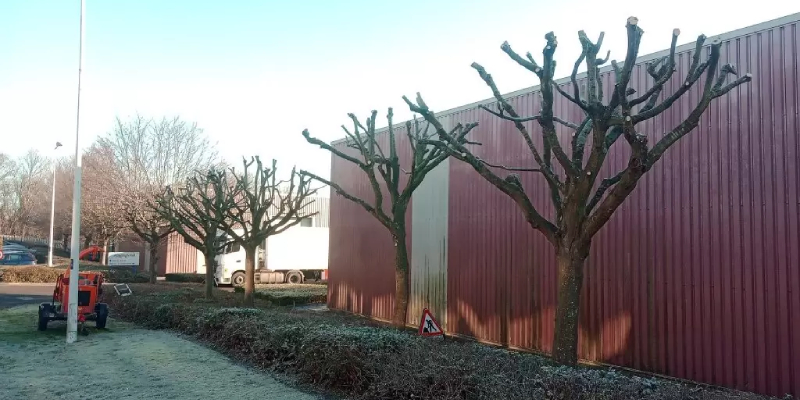
How Do You Maintain A Pollarded Tree?
Unfortunately, tree pollarding isn’t a one-and-done solution to managing the growth of your greenery. Effective pollarding requires consistent maintenance and yearly/bi-yearly re-pollarding. By learning about the trees you’re dealing with, you can develop an appropriate strategy to manage their future growth. For example, fast-growing trees like willows may need more frequent pruning. In contrast, hornbeams develop slow-growing dense foliage requiring less upkeep.
Once you’ve understood how to best manage the species of trees you’re pollarding, you should conduct regular inspections to ensure they’re developing as expected. Discolouration, unusual growth patterns or insect infestations are all signs that further action is needed. Regular check-ups from a professional arborist will help ensure the trees remain healthy and flag any issues before they become massively detrimental.
In addition to inspections, you’ll need to ensure the trees have enough water and nutrients to support their regrowth. Other methods for maintaining the tree’s health include clearing plant debris, applying mulch, and erecting physical protection to protect the tree from damage.
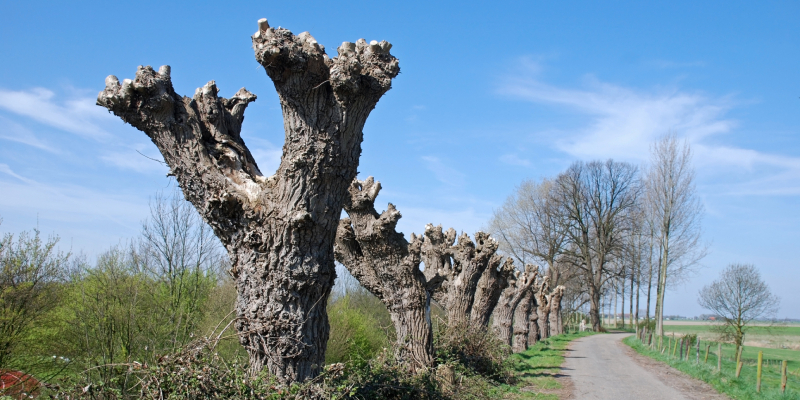
Is Pollarding Right For Your Trees?
Having been used for centuries to control tree size, shape, and growth, the benefits of tree pollarding are clear to see. Leading conservationists are even using pollarding to help preserve some of the UK’s most important habitats. Not just that, but after pollarding, young trees bloom in a far more visually appealing with bright leaves and neat canopies.
That said, pollarding isn’t for everyone. Before you commit to pollarding, you’ll need to consider several factors. Firstly, assess your landscape context. Are there plenty of trees in the area, or just one? Is it an urban or rural landscape? Additionally, you’ll need to figure out whether your trees are capable of epicormic growth, and if not, you shouldn’t try pollarding them. Personal factors should also influence your decision. For example, what are your objectives for tree pollarding, and can you commit to the necessary maintenance?
Ultimately, pollarding can be a valuable tool for maximising the potential of any landscape. But it must be done following the correct procedures. That’s why it’s always best to recruit the help of professionals if you’re planning to pollard trees on your property.
At Neal Landscapes, we’d happily support you with your pollarding needs. Our team has over 40 years of experience providing landscaping in Milton Keynes and surrounding areas, so we’re expertly placed to handle all your pruning needs. If you’re planning on transforming your property’s shrubbery or need support with a pollarding query, don’t hesitate to get in touch with us.
